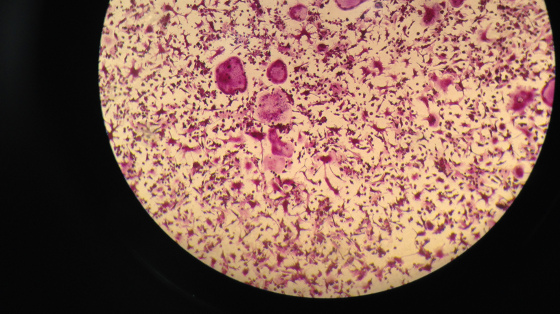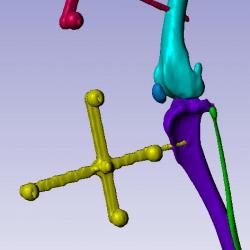Preclinical and clinical research related to the musculoskeletal system
I am interested in all aspects of surgical research, but with a particular emphasis on musculoskeletal research. Our work is broadly divided into the following themes:
Musculoskeletal Cancer: We work on the pathophysiology of primary and metastatic bone cancer, with a particular emphasis on paediatric bone cancer (osteosarcoma, rhabdomyosarcoma and Ewing’s sarcoma), breast and prostate cancer. The work with osteosarcoma utilises both cell culture and rodent models to explore the molecular pathways that facilitate or drive the spread of tumour to the lung. In parallel with this discovery work, we are also conducting therapeutic trials on novel inhibitors of key signalling pathways that have been shown to regulate tumour growth and metastasis.
Cancer treatments such as chemotherapy, endocrine therapy and radiation therapy are known to be potentially injurious to the skeleton. Improvements in survival rates after cancer treatment mean that we are now seeing the consequences of treatment-associated bone damage. We are especially interested in the long-term effects of radiation therapy on bone. Using a combination of in vitro and in vivo models, we have found that radiation injury affects both bone formation and bone resorption, leading to a profound loss of bone mass and an increased risk of fragility. Our work focuses on novel ways to prevent and reverse the effects of radiation therapy on bone, but it also has potentially broader implication the context of radiation exposure during long-term manned space missions, where the damaging effects of radiation may be synergistic.
Bone Regeneration and Implant Fixation: Long-term success with total joint replacement depends on the maintenance of robust fixation between the implant and the skeleton. We have significant experience with both small and large animal models of implant fixation. Current areas of emphasis include primary and revision total joint replacement, as well as percutaneous skeletal fixation for endo-/exo-prosthetic reconstruction following amputation.
Musculoskeletal Biomechanics: We have capabilities for laboratory and clinical studies in biomechanics. We have facilities of reference point indentation, force plate analysis and 3D motion capture and analysis. In the late summer of 2016, we anticipate delivery of a robotic joint simulator that will allow 6DOF testing of the elbow and knee joint.
Orthopaedic Infection: Infection is an extremely challenging potential complication of orthopaedic surgery, especially when implants have been used. Our laboratory is studying new methods for preventing or treating implant-related infections, with a particular emphasis on the management of multi-drug resistant organisms such as MRSA and MRSP.
Comparative Clinical Research: Many of the most important medical conditions seen in humans (cardiac disease; cancer; arthritis; infectious disease) are also seen in animals. Veterinary clinical trials provide a cost-effective and extremely promising approach to accelerating our ability to validate new drugs and devices, opening up new opportunities for delivering cutting edge care to both human and veterinary patients.



